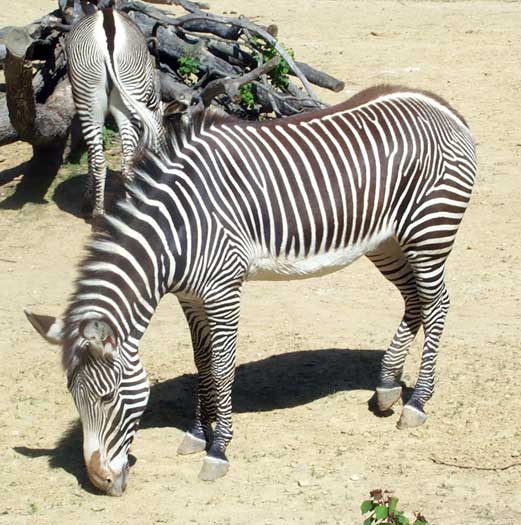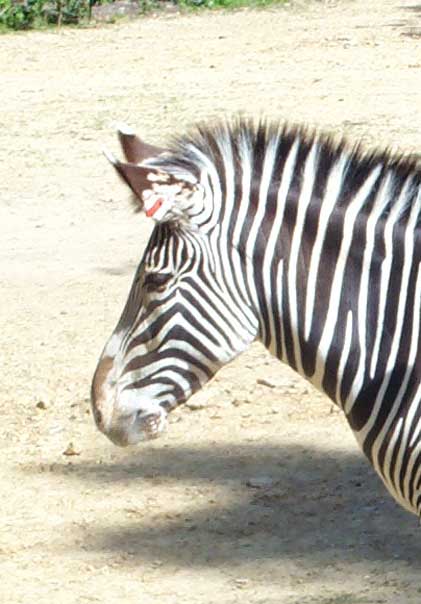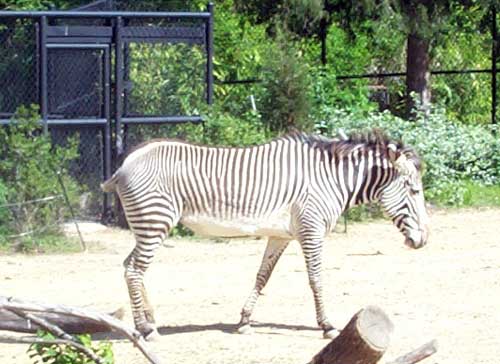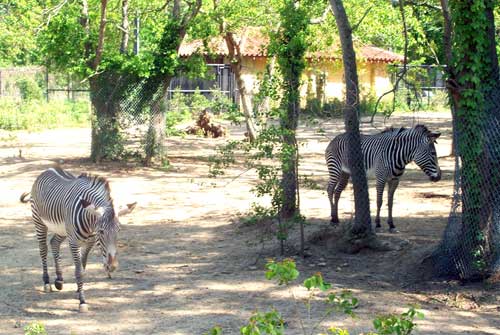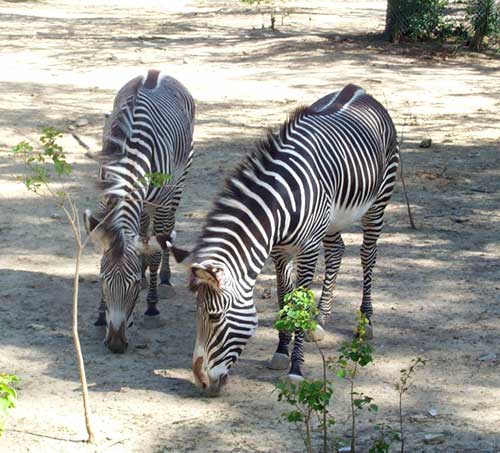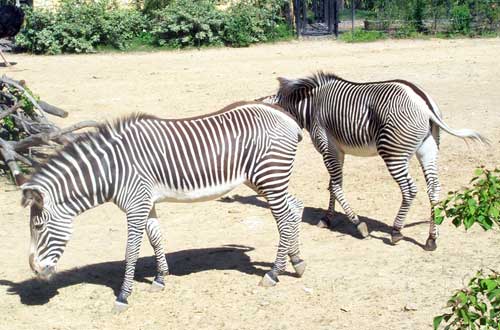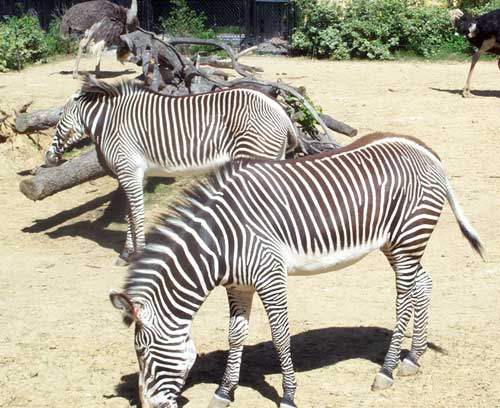Zebras
Kingdom: Animalia
Phylum: Chordata
Class: Mammalia
Order: Perissodactyla
Family: Equidae
Genus: Equus
Subgenus: Hippotigris
Zebras are either white with black stripes, or black with white stripes.[1] These stripes are typically vertical on the head, neck, forequarters, and main body, with horizontal stripes at the rear and on the legs of the animal. The "zebra crossing" is named after the zebra's white on black stripes.
Zoologists believe that the stripes act as a camouflage mechanism. This is accomplished in several ways. First, the vertical striping helps the zebra hide in grass. While seeming absurd at first glance considering that grass is neither white nor black, it is very effective against the zebra's main predator, the lion, which is color blind. A zebra standing still in tall grass may not be noticed at all by a lion and as zebras are herd animals the stripes help in camouflage is by confusing the lion � a number of zebras standing or moving close together may appear as one large animal, making it more difficult for the lion to pick out any single zebra to attack.[2] A herd of zebras scattering to avoid a predator will also represent to that predator a confused mass of vertical stripes travelling in multiple directions making it difficult for the predator to track an individual visually as it separates from its herdmates.
Stripes are also believed to play a role in social interactions, with slight variations of the pattern allowing the animals to distinguish between individuals.
A more recent theory, supported by experiment, posits that the disruptive coloration is also an effective means of confusing the visual system of the blood-sucking tsetse fly. Alternative theories include that the stripes coincide with fat patterning beneath the skin, serving as a thermoregulatory mechanism for the zebra, and that wounds sustained disrupt the striping pattern to clearly indicate the fitness of the animal to potential mates.
All zebras belong to the taxonomic order of Perissodactyla, which means "odd toed" or "single toed." Included in this order are tapirs, rhinoceroses, and horses. The zebra's hoof is actually an elongated third toe, where the other toes are simply not visible.
|


